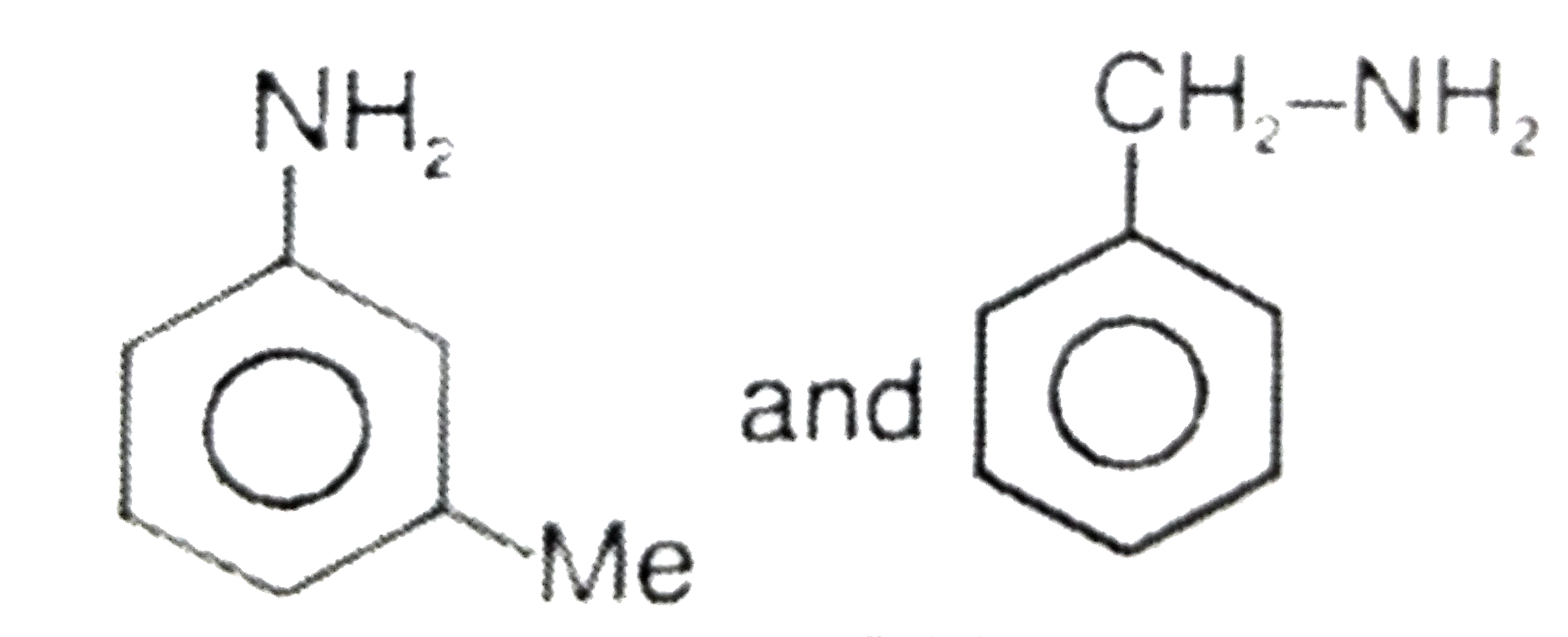Acetaldehyde and benzaldehyde can not be distinguished by
Tollen's reagent
Fehling solution
Iodoform test
None of these
The correct Answer is:A
To determine which test cannot distinguish between acetaldehyde and benzaldehyde, we will analyze the reactions of both compounds with three different reagents: Tollens' reagent, Fehling's solution, and the Iodoform test.
1. Understanding the Compounds:
- Acetaldehyde (CH3CHO) is an aliphatic aldehyde.
- Benzaldehyde (C6H5CHO) is an aromatic aldehyde.
2. Tollens' Reagent Test:
- Tollens' reagent (Ag(NH3)2+) is used to test for aldehydes.
- Both acetaldehyde and benzaldehyde react with Tollens' reagent to produce a silver mirror.
- Therefore, both give a positive result, and we cannot distinguish between them using this test.
3. Fehling's Solution Test:
- Fehling's solution is used to differentiate between aldehydes and ketones.
- Acetaldehyde reacts with Fehling's solution to produce a red precipitate of cuprous oxide (Cu2O).
- Benzaldehyde does not react with Fehling's solution and does not produce a precipitate.
- Thus, we can distinguish between acetaldehyde and benzaldehyde using this test.
4. Iodoform Test:
- The Iodoform test is positive for compounds that have a methyl ketone group (CH3CO-).
- Acetaldehyde contains this group and will give a positive result, forming yellow precipitate (iodoform).
- Benzaldehyde does not have this group and will not give a positive result.
- Therefore, we can also distinguish between acetaldehyde and benzaldehyde using this test.
5. Conclusion:
- The only test that cannot distinguish between acetaldehyde and benzaldehyde is the Tollens' reagent test.
Final Answer:
Acetaldehyde and benzaldehyde cannot be distinguished by Tollens' reagent test.
- Acetaldehyde (CH3CHO) is an aliphatic aldehyde.
- Benzaldehyde (C6H5CHO) is an aromatic aldehyde.
- Tollens' reagent (Ag(NH3)2+) is used to test for aldehydes.
- Both acetaldehyde and benzaldehyde react with Tollens' reagent to produce a silver mirror.
- Therefore, both give a positive result, and we cannot distinguish between them using this test.
- Fehling's solution is used to differentiate between aldehydes and ketones.
- Acetaldehyde reacts with Fehling's solution to produce a red precipitate of cuprous oxide (Cu2O).
- Benzaldehyde does not react with Fehling's solution and does not produce a precipitate.
- Thus, we can distinguish between acetaldehyde and benzaldehyde using this test.
- The Iodoform test is positive for compounds that have a methyl ketone group (CH3CO-).
- Acetaldehyde contains this group and will give a positive result, forming yellow precipitate (iodoform).
- Benzaldehyde does not have this group and will not give a positive result.
- Therefore, we can also distinguish between acetaldehyde and benzaldehyde using this test.
- The only test that cannot distinguish between acetaldehyde and benzaldehyde is the Tollens' reagent test.
Acetaldehyde and benzaldehyde cannot be distinguished by Tollens' reagent test.
Topper's Solved these Questions
Similar Questions
Knowledge Check
 can be distinguished byAI2+NaOHBNaSO3HCNaCN/HClD2,4-DNP
can be distinguished byAI2+NaOHBNaSO3HCNaCN/HClD2,4-DNPAcetaldeyde and benzaldehyde can be differentiated by
AFehling testBIodoform testCTollen's reagentDBoth a and bPhenol and benzoic acid can be distinguished by :
Aaqueous NaHCO3Baqueous NaNO3Caqueous NaOHDconc. H2SO4
Acetaldehyde and acetylene can be distinguished by :
View SolutionFormic acid and Acetaldehyde can be distinguish by
View SolutionAcetaldehyde and Propyne can be distinguish by :
(i) Tollen's reagent " " (ii) l2/NaOH " " (iii) Lucas reagent " " (iv) neutral FeCl3
View SolutionPropyne and propene can be distinguished by :
View SolutionMethanol and ethanol can be distinguished by
View Solution

 can be distinguish by
can be distinguish by